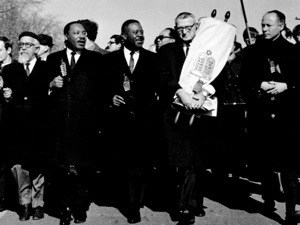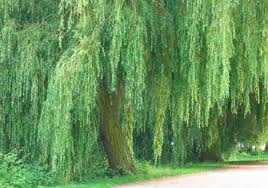Tonight is “Just Shabbat”.
In Hebrew, the word for Justice is tzedek. It’s related to the word for charity – tzedakah and to the word for a righteous person – tzaddik.
Lately, I’ve been thinking a lot about what makes someone a tzaddik, a righteous person.
This past week, we celebrated Martin Luther King Jr. and the victories of the Civil Rights Movement.
It was an age of tzaddikim – of righteous people.
Righteousness abounded.
As many of you hopefully know, American Jews played a significant role in the founding and funding of some of the most important Civil Rights organizations, including the National Association for the Advancement of Colored People (NAACP), the Leadership Conference on Civil and Human Rights, the Southern Christian Leadership Conference (SCLC) and the Student Nonviolent Coordination Committee (SNCC).
Additionally, from 1910 to 1940, more than 2,000 primary and secondary schools and twenty black colleges were established in whole or in part by contributions from Jewish philanthropist Julius Rosenwald. At the height of the so-called “Rosenwald schools,” nearly forty percent of southern blacks were educated at one of these institutions.
The Civil Rights Act of 1964 and the Voting Rights Act of 1965 were both drafted in the conference room of the Religious Action Center of Reform Judaism, under the aegis of the Leadership Conference, which for decades was located in the RAC’s building.
During the Civil Rights Movement, Jewish activists represented a disproportionate number of whites involved in the struggle. Jews made up half of the young people who participated in the Mississippi Freedom Summer in 1964. Leaders of the Reform Movement
were arrested along with Rev. King in St. Augustine, Florida,
the same year, after a challenge to racial segregation in public accommodations.
And most famously, Rabbi Abraham Joshua Heschel marched arm-in-arm with Dr. King in his 1965 March on Selma, prayed with him in a protest at Arlington National Cemetery, and stood side by side with him in the pulpit of Riverside Church.
As Rabbi Heschel’s daughter Susannah writes: The relationship between the two men began in January 1963, and was a genuine friendship of affection as well as a relationship of two colleagues working together in political causes. As King encouraged Heschel’s involvement in the Civil Rights movement, Heschel encouraged King to take a public stance against the war in Vietnam. When the Conservative rabbis of America gathered in 1968 to celebrate Rabbi Heschel’s sixtieth birthday, the keynote speaker they invited was King. And when Rev. King was assassinated, Heschel was the rabbi Mrs. King invited to speak at his funeral.
Heschel, like King, used Exodus imagery when writing about civil rights, and he used the imagery to rebuke white audiences for their racism. American Jews, too, were Egyptians, in Heschel’s retelling.
At his first major address on the subject, at a conference on Religion and Race on January 14, 1963, the occasion where Heschel and King first met, Rabbi Heschel opened his speech by returning the present day to biblical history:
“At the first conference on religion and race,” he said, “the main participants were Pharaoh and Moses….The outcome of that summit meeting has not come to an end. Pharaoh is not ready to capitulate. The exodus began, but is far from having been completed. In fact, it was easier for the children of Israel to cross the Red Sea than for a Negro to cross certain university campuses.”
At another conference, held at a time when white resistance in America was increasing, Rabbi Heschel reminded his audiences, “The tragedy of Pharaoh was the failure to realize that the exodus from slavery could have spelled redemption for both Israel and Egypt.
Would that Pharaoh and the Egyptians had joined the Israelites in the desert and together stood at the foot of Sinai!”
In this week’s Torah portion, the Israelites are standing just there – at the foot of Sinai – and it is in this parsha that Moses relays to them the following words from God:
You shall not wrong a stranger or oppress him, for you were strangers in the land of Egypt. If you mistreat them, I will hear their cry when they cry out to Me, And I will be furious
Part of what made Rabbi Heschel and Rev. King tzaddikim – righteous people – was their refusal to allow others to hide from God’s furry.
They shouted it from their pulpits;
They taught it to their people.
It was Rabbi Heschel who taught, “The opposite of good is not evil, the opposite of good is indifference,” as well as the famous statement, “In a free society, some are guilty, but all are responsible.”
The Jewish community has internalized this teaching, in its continued support of civil rights laws addressing persistent discrimination in voting, housing and employment against not only women and people of color but also in the gay, lesbian, bisexual and transgender communities and the disabled community.
Judaism teaches respect for the fundamental rights of others as each person’s duty to God. “What is hateful to you, do not do to your neighbor”, our Sages wrote. Equality in the Jewish tradition is based on the concept that all of God’s children are created in the image of God. From that notion flows the biblical command: “You shall have one law for the stranger and the citizen alike: for I Adonai am your God.”
I am proud of this heritage,
But I am also saddened
when I look out at our Jewish leaders and communities today.
We seem tired.
We seem apathetic.
We seem to have difficulty motivating one another to get up and march.
This doesn’t feel like an age of tzaddikim
It feels like we’re waiting for someone,
for something,
to motivate us to action.
But Rabbi Heschel and Rev. King are gone.
There is no one here but us.
This month, I’ll be kicking off a Read Along with the Rabbi series, and the first book we’ll be reading is called: There Is No Messiah, and you’re it.
This book is a call to see ourselves as the fulfillment of, rather than the anticipators of messianic change. In other words, “we have to be the change we want to see in the world.”
And we don’t all have to be great leaders like Rev. King and Rabbi Heschel.
Sometimes tzaddikim are just regular folk.
But don’t mistake me, they do not go unnoticed.
Yesterday, I was devastated to find myself at the funeral for Jessica Horrowitz, who had recently joined our Temple Beth David family
as our weekday office administrator. Jessica was tragically killed in a car accident on Monday night.
When we hired Jessica, it was because she was a great fit for the job. If only we had known how over-qualified she truly was.
We didn’t have a chance to know her well, but the kind of life she lived was attested to by the 500 or so people who came to her funeral.
Jessica wasn’t just a secretary.
She wasn’t just a wife and mother.
She was a really, really good person.
She was a tzaddik.
She and her family have been involved in the Jewish community, through Temple Israel and the national movement of Conservative Judaism for many years.
She was a great hostess, a giver of tzeddakah,
a lover of children and animals.
She was a teacher. She served on temple committees.
She supported her husband as a member of the brotherhood
and her son as a leader in the youth movement.
She was a good friend.
She was a killer-shopper and a great-finder of bargains.
She was always cheerful. She had much to give.
The amount of people who came to mourn her attests to the fact that she was as much of a tzaddik as Rabbi Heschel and Dr. King, although apparently she was also quite modest and would have hated to have me say so.
But her life, cut so tragically short, should be a powerful reminder to us that we don’t have to lead the Civil Rights Movement to change the world
We can change the world one life at a time;
One friend at a time;
One child at a time;
One task at a time.
But we cannot be indifferent.
We cannot exempt ourselves from responsibility.
Rabbi Heschel described the March on Selma as having spiritual significance. He wrote, “For many of us the march from Selma to Montgomery was about protest and prayer. Legs are not lips and walking is not kneeling. And yet our legs uttered songs. Even without words, our march was worship. I felt my legs were praying.”
On this Shabbat, we pray, in memory of Dr. King, Rabbi Heschel and Jessica Horrowitz, and for the sake of our world and our future:
may each of us strive to be tzaddikim;
may each of us motive ourselves and each other
to rise up against injustice;
may each of us declare this age, our age, to be an age of tzaddikim.
Heschel and King and Jessica are not here.
There is only us.



